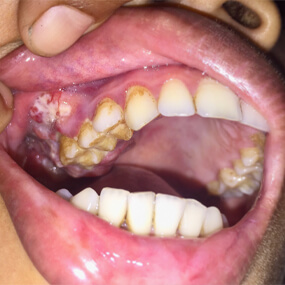7 Signs You May Require Root Canal Treatment

Self-diagnosing a dental problem can be difficult and even impossible. Perhaps better and more consistent oral hygiene is enough to overcome whatever issues you are experiencing. On the other hand, it may require treatment performed by a skilled dentist, and dentists are the only people you can trust to diagnose the underlying cause and determine if root canal therapy is required.
However, there are seven common signs that do point to a root canal as the only option and should spur you to schedule a checkup. The dental pulp comprises of nerves and blood vessels. When your pulp becomes damaged due to infection or decay, a root canal may be needed to save your tooth. With such a procedure, a dentist or endodontist removes the damaged pulp tissue, cleans the area, and fills the canal spaces of the tooth.
Here are seven signs you may need root canal therapy:
1. Persistent Pain
Consistent pain associated with a tooth is a chief indicator that the root is infected or decaying. The pain may be ongoing, or it may just occur during certain normal activities, such as eating or drinking. In either case, you want to schedule an appointment with your dentist as soon as possible. Your dentist can determine if the ache is caused by inflamed nerves or blood vessels. Your dentist may prescribe antibiotics to treat the infection and may recommend root canal therapy in order to save the tooth.
2. Cold or Heat Sensitivity
Tooth sensitivity is another common indication that you may need a root canal. If you experience discomfort when drinking coffee and other hot drinks, this is a warning you must act on. Even if the ache is minor, it can quickly become much more intense and debilitating. If you experience pain when consuming cold food and drinks, that can indicate an infection. If the tooth is particularly painful, that may suggest that the blood vessels or nerve endings are damaged. A root canal may be needed.
3. Sustained Sensitivity
The cold and heat sensitivity discussed above is often fleeting and brought on by a specific action, such as drinking ice water. If, however, you experience sensitivity that persists and you experience pain when you put pressure on the tooth, this is an indication that the nerve is damaged. Root canal therapy is likely at this point, and you need to schedule an appointment with your dentist not only to alleviate the discomfort but to stop the infection from spreading and to save your natural tooth.
4. Swollen Gum Area or Abscess Beside the Root Surface Area
Swelling of the gums indicates a problem below the gumline. The most common cause of swollen gums is gingivitis, which is the earliest stage of gum disease. Gingivitis can be reversed just through more extensive and regular dental hygiene. You should see your dentist nevertheless. If the gums are particularly swollen or painful alongside the root surface or have raised bumps on them, that can indicate an infection, and your dentist may recommend a root canal in order to get rid of the infection and heal the gums.
5. Dark Tooth Discoloration
Tooth discoloration can occur due to poor oral hygiene or because you have consumed foods and drink that stained your enamel. However, if the discoloration is particularly dark, it often indicates serious nerve damage. A root canal is often the only way at this point to save the tooth.
6. Chips and Cracks
Chipped and cracked teeth are common dental injuries caused by eating hard foods, slips and falls, sports activities, and even improper dental care. Even when they seem minor, such injuries require immediate attention from a dentist. Cracks and chips can expose the underlying root and lead to an infection. Infections not only cause pain and undermine that particular tooth, but they can also enter the bloodstream and spread, which can cause a wide range of other health complications.
7. Deep Decay
Once the decay of a tooth is serious enough, you cannot reverse it just by brushing, flossing, and rinsing. Untreated cavities, for instance, will spread to the nerves and blood vessels of the pulp. At this point, a root canal is usually the only option, followed by a crown to protect the repaired tooth. This level of pulp infection could have been avoided if good oral hygiene and regular visits to your dentist had been carried out.
Remain Calm, but Take Action
The information provided here is not meant to alarm you—only inform you. The good news is most of the above problems can be corrected, and the sooner you act, the less discomfort you will experience, and the smaller the dent in your wallet. Root canal therapy can seem scary. Many people have a misguided idea of what root canals feel like due to outdated impressions. Modern root canal therapies are usually quite painless, and if necessary, there is sedation and other options available to you. One thing is for certain, living with a bad tooth hurts a lot more than any root canal treatment or recovery.
Relieve Your Discomfort and Restore Your Tooth
The best way to determine if you require root canal therapy is to schedule a checkup with your dentist. If you are experiencing persistent pain or any of the other signs discussed above, call your dentist right away rather than waiting for the next episode of tenderness and pain. Jeffrey D. Clark, DDS, specializes in restorative as well as cosmetic dentistry. He can perform a comprehensive diagnosis, explore your treatment options, and assist you in making the best choice for you. Schedule your appointment at Scottsdale Cosmetic Dentistry Excellence by calling us today at 480 585 1853.




